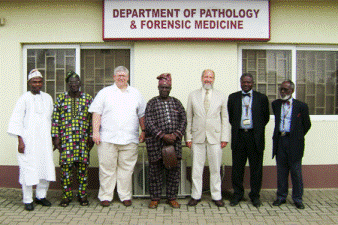Natural Resources, School of

Karl Reinhard Publications
Document Type
Article
Date of this Version
2015
Citation
Published in Journal of Forensic and Legal Medicine 36 (2015), pp. 81–83. doi: 10.1016/j.jflm.2015.09.005 ; PMID 26408393
Abstract
The discovery of dipteran remains on mummified individuals can lead to either cause for curatorial concern or to a better understanding of the individual’s post-mortem environment. The present study analyzed insect remains associated with the body of a unique medieval mummy of religious significance, that of the Blessed Antonio Patrizi da Monticiano. A total of 79 puparia were examined and all were identified as Ophyra capensis (Diptera: Muscidae). Additionally, a desiccated moth (Lepidoptera: Tineidae) was encountered. Puparia of O. capensis would be associated with normal decomposition shortly after the death of the mummified individual, and not an infestation beginning during more recent years. Similarly, the tineid moth found would likely be related with decomposition of cloth associated with the remains. These findings illustrate how collection and identification of insects associated with human remains can distinguish between historical decomposition versus issues of modern curatorial concern.
Included in
Archaeological Anthropology Commons, Ecology and Evolutionary Biology Commons, Environmental Public Health Commons, Other Public Health Commons, Parasitology Commons


Comments
Copyright © 2015 Elsevier Ltd and Faculty of Forensic and Legal Medicine. Used by permission.